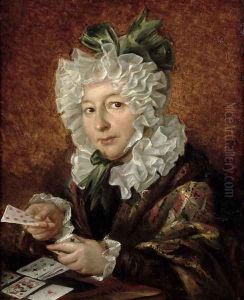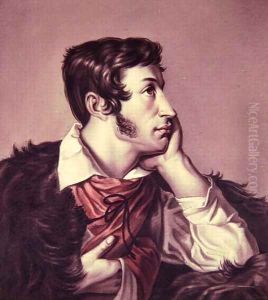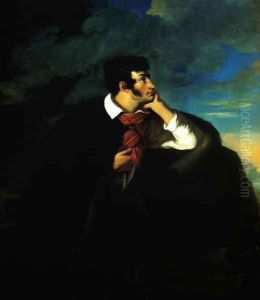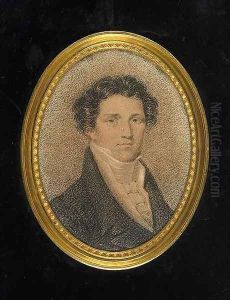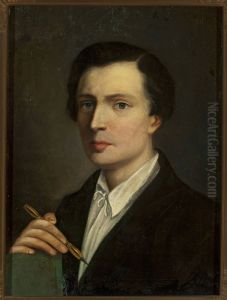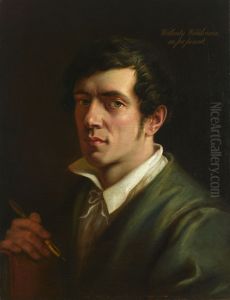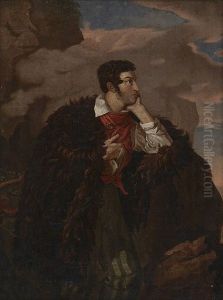Walenty Wankowicz Paintings
Walenty Wańkowicz was a Belarusian-Polish painter, born on February 14, 1799, in Minsk, then part of the Russian Empire, now the capital of Belarus. His life spanned a period of significant political upheaval in Europe, and his work is often seen in the context of the Romantic movement, which emphasized emotion and individualism, a reaction against the Industrial Revolution and the aristocratic social and political norms of the Age of Enlightenment.
Wańkowicz showed an early inclination towards the arts and was initially educated in Vilnius. In his early twenties, he moved to Italy to further his education, where he was significantly influenced by the works of the Italian masters. Italy was a center for young artists from across Europe, and Wańkowicz absorbed not only the techniques but also the philosophical and aesthetic ideals that were current among his contemporaries.
After his studies in Italy, Wańkowicz returned to his homeland, where he became known for his portraits and historical scenes, which often reflected the Romantic fascination with national identity, individual heroism, and the struggle for independence. His work from this period includes portraits of many significant figures of the Polish-Lithuanian Commonwealth, contributing valuable insights into the cultural and political milieu of the era.
One of his most famous works is the portrait of Adam Mickiewicz, the renowned Polish poet, painted in Rome in 1828. This portrait is celebrated for its evocative representation of Mickiewicz’s contemplative and melancholic demeanor, capturing the spirit of Romanticism. Wańkowicz's ability to depict psychological depth and emotion in his portraits set him apart from his contemporaries.
Despite his success as an artist, Wańkowicz's life was marked by the political turmoil that engulfed Poland and its surrounding regions. He was an active participant in the November Uprising of 1830-1831, a rebellion against the Russian Empire, which further colored his work with themes of national struggle and sacrifice. After the uprising, Wańkowicz, like many of his compatriots, faced repression under Russian rule. He spent the latter part of his life in exile, continuing to work and exhibit in countries such as France and Germany.
Walenty Wańkowicz died on May 12, 1842, in Dresden, Germany. Though his career was relatively short, his works remain an important part of Polish and Belarusian cultural heritage, embodying the Romantic spirit and the enduring desire for freedom and national identity. His paintings are preserved in various museums and collections, serving as a testament to his skill and his passionate engagement with the pivotal issues of his time.
